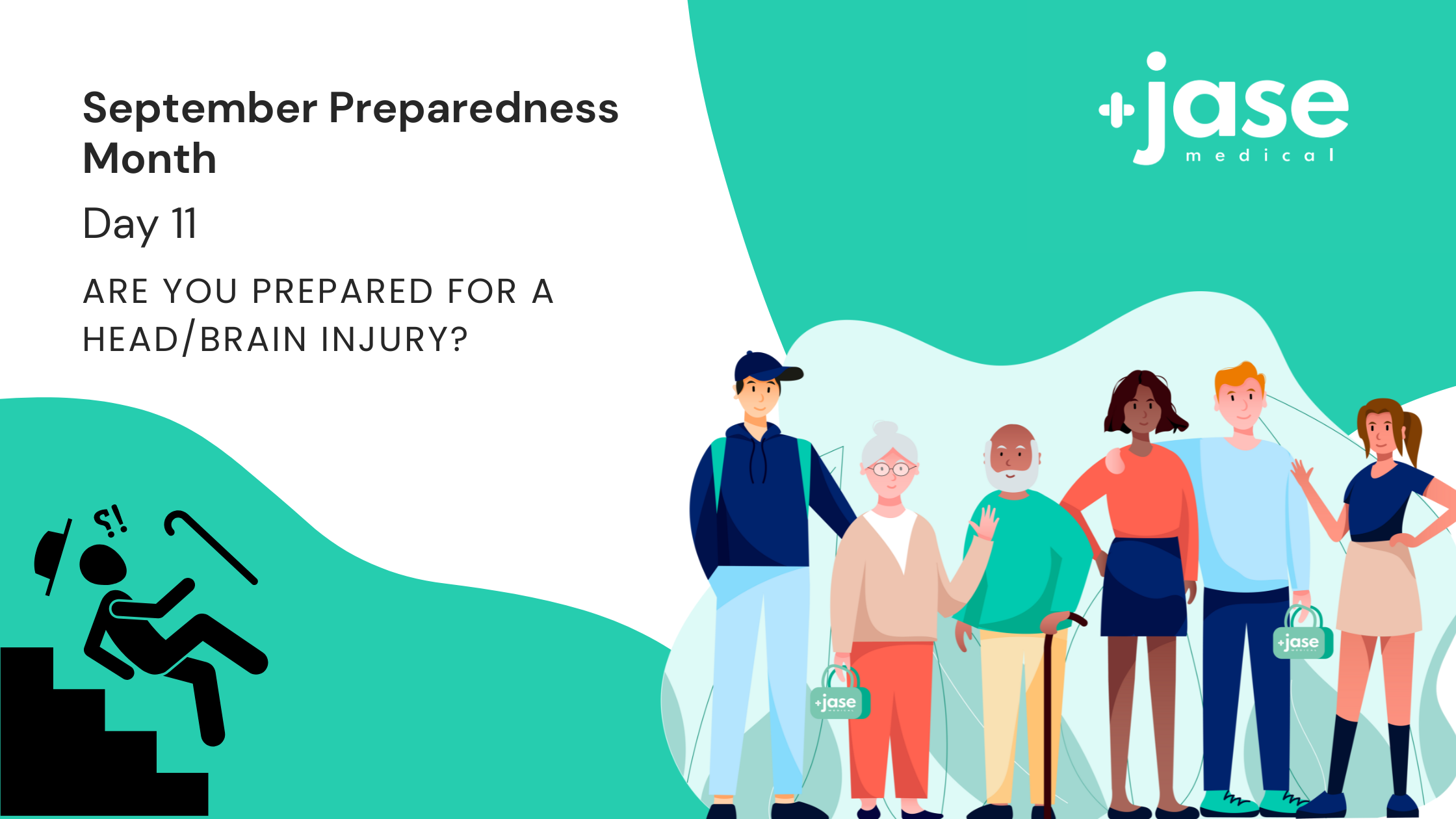

Brain injuries affect more than 2.8 million people each year, according to the Brain Injury Association of America, and they are a leading cause of injury-related deaths.
What is a head/brain injury?
A head or brain injury is any type of injury involving the head or face. This includes lacerations, impact injuries (fall off bicycle not wearing helmet, for example, motor vehicle collisions and sports injuries.
There are many causes of head injury in children and adults. The most common head injuries are from motor vehicle accidents-driver, passenger or pedestrian, along with violence, falls, or as a result of shaking a child (as seen in cases of child abuse).
What are the major types of head injuries?
There are many types of head injuries. Some injuries are quite obvious to spot, others may not be so obvious and may even take a day or so for symptoms to emerge.
Note: If the victim is unconscious or has sustained obvious injuries to the head, neck or spine do not move the victim and call 911. Cover them to avoid shock.
Laceration
Lacerations of the head can bleed quite profusely. This is because the head has a tremendous amount of blood vessels surrounding the skull. It can be quite disruptive and even frightening to see a head injury bleed if the onlooker/ caregiver is not aware of this.
Concussion
Concussions are usually caused by a blow to the head. Violently shaking of the head and upper body also can cause concussions. Loss of consciousness is rare. Falls and contact sports such as football
- Can’t recall events prior to or after a hit or fall.
- Appears dazed or stunned.
- Forgets an instruction, is confused about an assignment or position, or is unsure of the game, score, or opponent.
- Moves clumsily.
- Answers questions slowly.
- Loses consciousness (even briefly).
- Shows mood, behavior, or personality changes.
- all are the most common causes of concussions.
Please watch this video on delayed concussion symptoms
Skull fracture
A hard blow to the skull may cause a crack in the bone. If the bones do not shift, they will heal properly with time.
Diffuse axonal injury
is the shearing (tearing) of the brain’s long connecting nerve fibers that happens when the brain is injured as it shifts and rotates inside the bony skull. DAI usually causes coma and injury to many different parts of the brain.
Hemorrhage
Bleeding may occur when a blood vessel tears due to head trauma. The blood can accumulate in different spaces, causing a subarachnoid hemorrhage, subdural hematoma.
When does a head injury require medical attention?
If the head injury is a laceration, depending on how the injury was sustained you may be able to just clean the wound and apply first aid ointment and bandage. If the injury was from fall or any sort of impact, evaluate the injury.
How to evaluate a head injury
For concussions, Cleveland Clinic has a series of tests that can help you evaluate whether to seek medical attention
Here is one of their tests, please follow the link above for further tests
Concussion assessment tools
Warning: Assessment tools for concussions are not a substitute for medical evaluation. No youth athlete (under the age of 18 years) who has taken a blow to their head or has a suspected concussion should ever return to sport the same day. They should be removed immediately until a medical provider feels it’s safe for them to resume their sport. In all 50 states, it goes against state law for an athlete to return to a practice/game without first being assessed by a medical professional for clearance.
SAC test
People use the standardized assessment of concussion (SAC) test on the sidelines and at the emergency room test to assess the immediate mental status of athletes. This test checks the athlete’s orientation, immediate memory, concentration, and delayed memory. SAC takes about five minutes to complete. Test questions include:
- Stating the date, month, year, day of the week and current time.
- Memorizing a list of words then recalling them.
- Repeating a sequence of numbers backward.
- Saying the months of the year in reverse order.
In conclusion-If you haven’t already taken first aid training now is the time to do this. Our unstable economy, along with medical staff and supply shortages are the perfect recipe for not having readily available help as many of us are so used to. Please get your preps , skills, books, supplies together. We are running out of time.
Lifesaving Medications
Recent Posts
Keeping you informed and safe.
FAQ: Our most commonly asked questions about Jase
If you’re considering Jase, chances are you’ve paused and thought, “This makes sense, but I still have a few questions.”You’re not alone. Here are the most common ones we hear, answered plainly. Is this really doctor-prescribed? Yes. Every Jase order is reviewed by a...
Medical Readiness: What Really Kills First
When Disaster Strikes, It’s Not Hunger or Thirst That Takes the First Lives In every disaster zone, from hurricanes in the Caribbean to war zones in Ukraine, the pattern is the same. People worry about food and water, but it’s infection that kills first. A small wound...
Exploring Dr. William Makis’ Hybrid Orthomolecular Cancer Protocol: Focus on Ivermectin and Mebendazole/Fenbendazole
Exploring Dr. William Makis’ Hybrid Orthomolecular Cancer Protocol: Focus on Ivermectin and Mebendazole/Fenbendazole *Disclaimer: This article is for educational purposes and does not constitute medical advice. Always seek professional guidance.* In the evolving...



